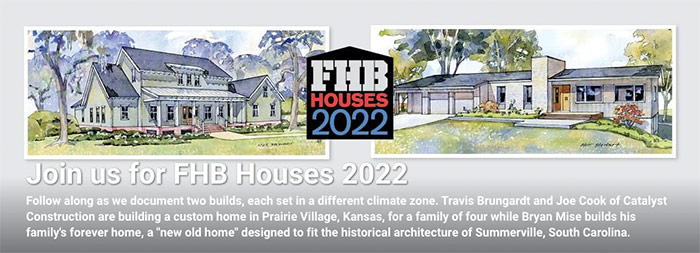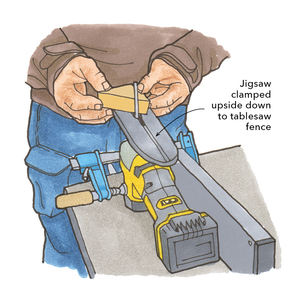Podcast 529: Cold Floors, Galvanic Corrosion, and Siding Over Board Sheathing
The crew hear from listeners about cold-weather gear and smartwatches before taking questions about warming a cold house, using galvanized fasteners with aluminum flashing, and siding over board sheathing.
Follow the Fine Homebuilding Podcast on your favorite app. Subscribe now and don’t miss an episode:
 |
Help us make better episodes and enter for a chance to win an FHB Podcast T-shirt:
www.finehomebuilding.com/podcastsurvey
Andy writes in about staying warm during cold-weather work. Ben and Richard have thoughts on smart watches suitable for tradework. Nick needs help making his house more comfortable. Mike Guertin clears up galvanic corrosion. Joe asks about transitioning from masonry to wood siding. Tim wants to know the best way to air-seal his board-sheathed outbuilding.
Editor Updates:
- Mike: door jamb Bondo repair
- Andrew: frozen bathroom pipes
- Patrick: house and window washing
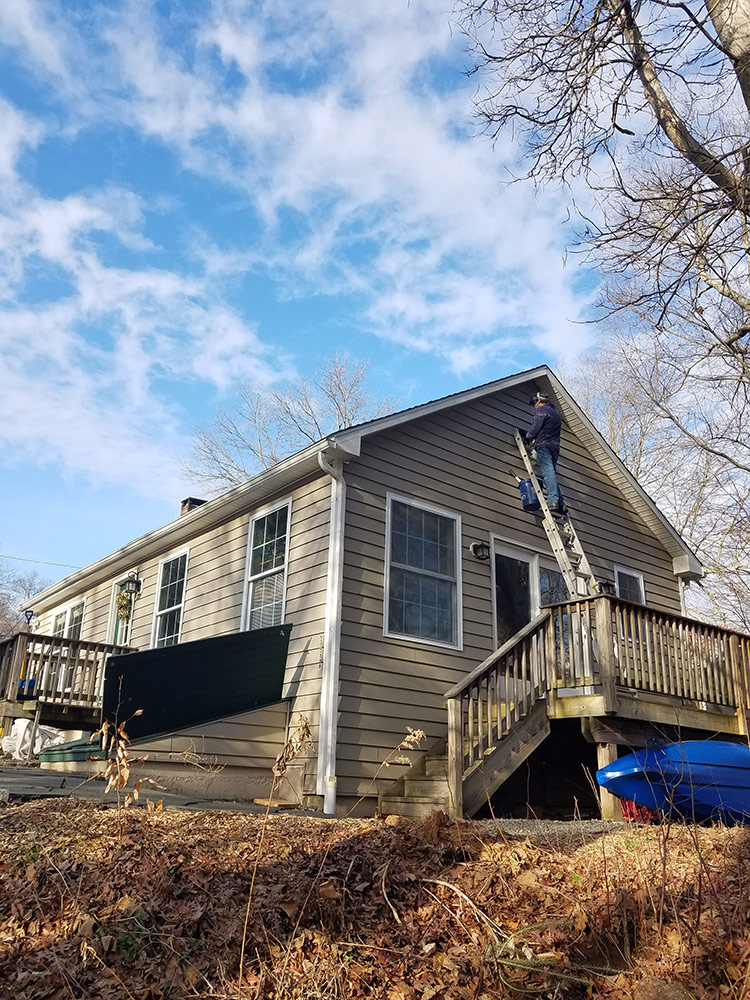 |
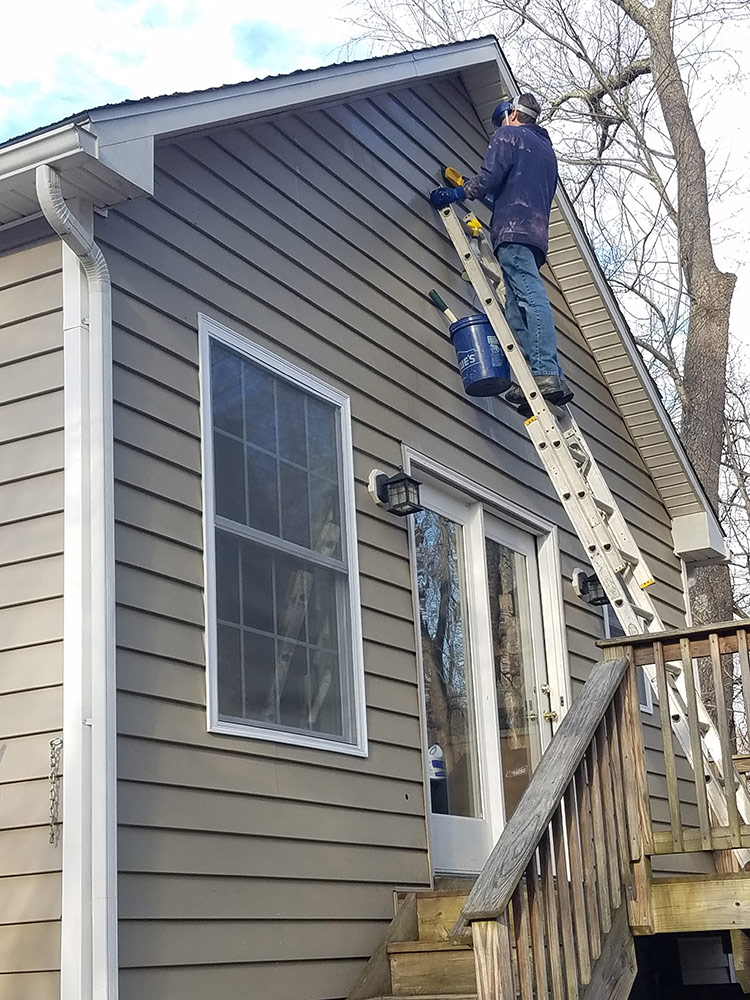 |
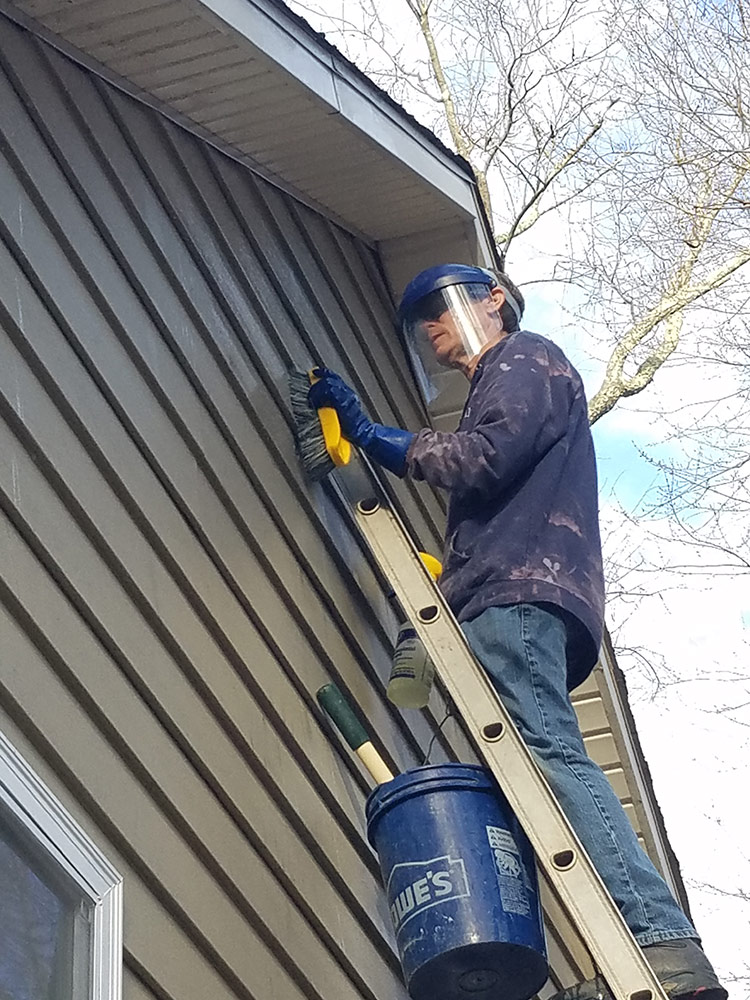 |
Listener Feedback 1:
Andy Steele writes: Hi Patrick et al, I just listened to the aftershow discussion on workwear in cold climates and thought I would send you some of my thoughts. Despite your experience here in the NC mountains last winter, we do in fact get cold weather. Our current 10-day forecast has lows in the single digits and highs in the teens.
In terms of cold weather gear, you hit the nail on the head when you mentioned layering. I personally like merino wool base layer tops and bottoms. On top of that I usually wear some sort of mid-weight thermal pullover typically with a half zipper and a vest for an outer layer if I can get away with it. If not, then a jacket is required. I like the vest because it doesn’t limit mobility as much as a jacket once you have a tool belt on. I have all but abandoned my big Carhartt coat and replaced it with a Carhartt puffer jacket. I find it to be just as warm, a fraction of the weight, and much easier to move around in.
For pants I have a mixture of Truwerk and Carhartt pants. I like the Truwerk pants a lot for their water resistance and wind resistance, but they are loud as Andrew mentioned. Carhartt started making a line of pants called “Rugged Flex” a few years ago, and in my experience, they are the best pants offered by Carhartt. I like the double knee version. The cut of these pants is much more modern with slimmer legs, gusseted crotch, and small tool pockets on either side that are large enough to fit a regular-sized cell phone. The fabric is made with some stretch to it so you can bend and squat without showing the world your John L’s.
What I found to be as important as the gear itself is the manner in which you wear it. For years and years I would get dressed at home, get in the truck, drive 30-45 minutes to the job then freeze all day and finally warm up again in bed. The worst offender was my feet, which usually got cold in November and warmed up again in March. Now what I do is wear as little clothing as possible on the way to the job site. I typically wear sneakers or my slippers to drive in, get to the job and change my socks (which are always some sort of wool blend with Darn Tough as my current favorite) and shoes. During this process I always dry my feet with a towel to get rid of any sweat that has accumulated on the commute. I’ll typically put my top two shirt layers on when I get to the job site as well. The idea here is to reduce the possibility for sweating before spending the day outside in the cold.
Also tuck your shirttails in! This would seem like common sense, but I have to tell every new employee that at least 2 times. Keeping the wind from blowing up under your shirt will go a long way to making your day more comfortable.
Having a good hat is important as well. We call them toboggans here, but I understand the rest of the world refers to them as beanies or stocking caps. I really like ones that have an extra band of insulation or an additional layer of fabric around the part that covers your ears and has less material on the top so your head can breathe. These are also easily removable and a great way to let some excess heat out if needed.
Anyways, hope you are well and as always great job on the podcast.
Thanks, Andy Steele
Related Links:
- Better Bibs for Cold-Weather Work
- Workwear Made to Last Longer
- Brian Ciciora, Product Designer and Builder
Listener Feedback 2:
Ben K. in Littleton, MA writes: Greetings FHB Podcast Crew! I always learn something while I listen and finally a question came up that I hope can help someone else. In episode #521 the question was raised as to which smartwatch can handle trade work. That was a question I had recently as well.
Here was my problem: as a finish carpenter, like many others, I get constant texts from other crew members at other jobs, the builder, and homeowners. With the cost of phones, I hate having my phone in my pocket while having to carry ladders and other material with the constant fear I’m going to bump the side of my leg and break my phone. My previous solution was to leave my phone at my workbench. The problem was any time I was away from my bench, if I got a text, email, or call, I would have to stop what I was doing and go back to the bench to check it. What a time waster!
Here is a solution that works really well for me:
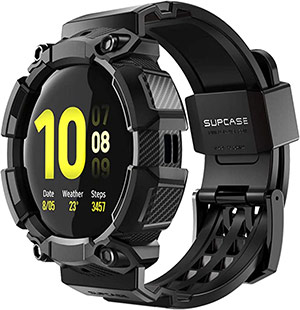
Remember, not all smartwatches are created equal! The main purpose for me was to be able to reply to texts through my watch via talk to text. While you may think this is a standard feature on all smartwatches, it is not. Most watches only allow preloaded responses. Apple and Samsung are the best at talk to text.
I don’t have an Apple phone so Samsung it is! Out of the Samsung watch models, the Samsung Galaxy Active 2 is the way to go in my opinion. I have the Bluetooth version, which has surprisingly good range but also comes with LTE capabilities. I can also answer phone calls while up on a ladder and talk through my watch. Again, that’s not a feature on every smartwatch.
That coupled with a rugged smartwatch protector like the Galaxy Watch Active 2 Unicorn Beetle Pro Wristband Case and a screen protector, the smartwatch can handle some serious abuse!
Thank you all for dispensing so much knowledge! I especially appreciate it when something is said, realized it needed to be corrected, and then the correction is shared in a later podcast. That’s a sign of good people right there!
Here for all your smartwatch needs. -Ben K.
Listener Feedback 3:
Richard writes: I think one wireless AirPod in the ear does everything you need — short of health monitoring. Answer the phone, listen to messages, send messages, call etc.
Question 1: Is radiant heat the solution?
Nick from Milton, WA writes: Hey guys, one of your listeners asked about smartwatches for the trades, and I can’t recommend my Garmin Instinct enough. I’m not in the trades, but it has held up to years of firefighting abuse. It doesn’t have a touchscreen? but it displays all of my phone’s notifications and only needs a charge every 2 or 3 weeks (if you spring for the solar version, you will never have to charge it).
I have a few issues with my house and I think I have found a solution to tackle them all, but I’m hoping you guys will let me know if I’m way off. I live in western Washington state, my house’s main living area has cathedral ceilings and an open loft-style second floor where the master bedroom is located. Heating and cooling is taken care of by a 4-zone minisplit and a woodstove.
My problems are:
1. Very cold floors in the winter.
2. The minisplit is undersized to heat the main living area by itself. When/if we get the living area warmed to a comfortable temperature, it’s a billion degrees upstairs and it makes it impossible to sleep, mostly because all I can think of is how much hot air we are letting escape out our bedroom window! I will be installing a door to our bedroom soon to hopefully alleviate that one problem. It is also somewhat annoying to hear the minisplit blowing 24/7 in the cold months.
3. I grew up splitting wood for our woodstove, and I’m over it and I want to get rid of it.
4. The uninsulated water lines run through the crawlspace and they are secured tight to the underside of the floor joists ,so I don’t think I can add pipe insulation.
I think something like staple-up radiant heating from Radiantec or a similar product would solve all of my problems. My thought is then I would install some 1x on the bottom of the joists so I can add a layer of rigid foam to the underside, thus bringing the water lines into a warm and insulated space.
It’s probably worth noting that when the furnace broke years ago the previous owner decided not to replace it and, for unknown reasons, destroyed all of the ducting and left gaping holes where the registers used to connect to ducting. I fixed those, but I’m not interested in installing another whole-house dust blower (furnace). Thanks for reading; love the podcast. -Nick
Related Links:
Question 2: Can I use galvanized nails with aluminum flashing?
Mike Guertin writes: Hi Patrick, I bend up my own flashing for window caps, step flashing, skirt boards, deck ledgers, and others out of colored aluminum coil stock. One of the guys on our crew questioned my use of galvanized nails (siding, roofing, or trim style) to fasten the flashings. He pointed out that the galvanic reaction between the dissimilar metals (aluminum and galvanized steel) will result in corrosion of the aluminum. I’m aware of galvanic reaction but thought that in order for it to occur there needed to be moving water. I always fasten the flashing as high as possible where the nails will be covered by the siding or roofing or trim. What is the risk of galvanic reaction in typical siding and roofing and exterior trim situations? And what, if anything, should I do better to avoid a flashing durability problem?
Related Links:
Question 3: How do you handle attic moisture caused by the chimney?
Joe from Laurel, DE writes: Evening FHB Podcast, a friend of mine has found an interesting issue in his attic along his gable wall. While investigating his dryer vent problem (perhaps a story for another time), he noticed his sheathing along the truss and some of the roof plywood was discolored. While I haven’t been able to see the property myself, or the flashing, I have a concern that the masonry wall may be in direct contact with the gable wall. I don’t have a reference to what code was in 2004 when the house was built, much less which code was applicable in 2004. However, compared to my 2018 book, they recommend a minimum one-inch air gap as a clearance to combustibles. In his situation, R1003.18 plus exemption 3 would apply. Any who, this leads me to some questions.
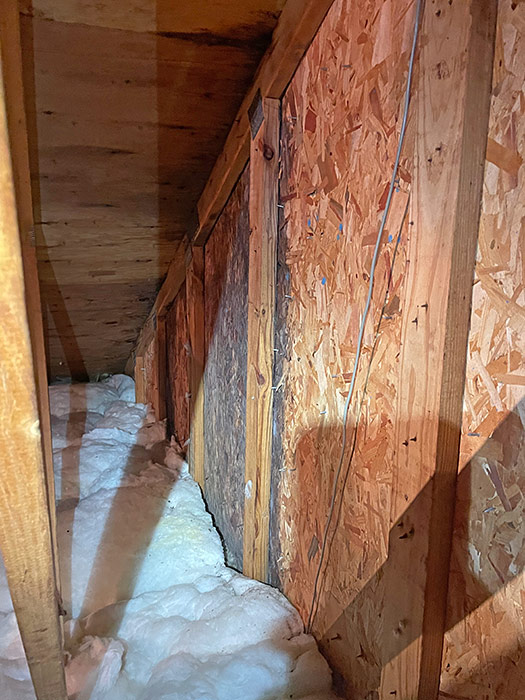 |
 |
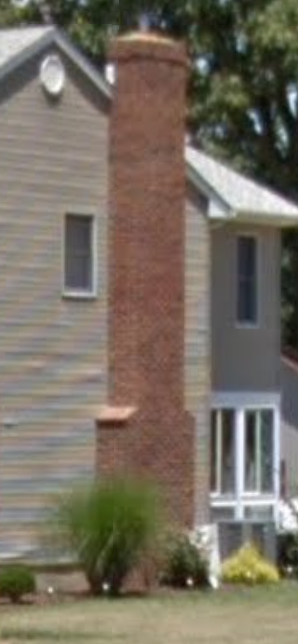 |
Chapter 10 of the IRC leaves out any specifics or circular references to another chapter, namely chapter 7, with the exception of masonry veneer chimneys (referencing R703), which this is not. I would defer to at least the same requirements as a WRB system behind a veneer wall, less the ledger and weephole requirements. But this puts me on a tailspin…
1) Is there code on a WRB between the chimney and the wood-based sheathing?
2) Code or not, what is the moisture mitigation procedure for a seldom-used fireplace?
3) If moisture did accumulate… where does it diffuse to? Where can it diffuse to? How do you diffuse it and maintain fireblocking?
4) If his problem is in fact moisture between the chimney and the wall, is there mitigation possible without removing or replacing the chimney? The gable truss may complicate a “from the back” approach.
5) Where might I find some resources to learn more about masonry fireplaces and chimneys? In the tight-envelope world, this juncture may be even more important to get right. Our climate is 4A… so awfully moist year-round.
Thanks for any input! I’ve enjoyed the podcast very much. While I’ve seen a lot as a remodeler, this one has me a little perplexed on how to handle other than inspecting the flashing and wall. Fortunately, it’s not my job (or at least not yet anyway), so more of a curiosity for me. I used to spend my summers in the Adirondacks and some winters in Jeffersonville, VT. I’ve been to Stowe and find the peculiarities of that area so interesting, especially since I’ve never seen a witch’s window on “my” side of The Notch. Not to mention that I love New England’s diversity and nuances in local (older) construction. My apologies if this has gotten a bit long winded, but thanks anyway!
Related Links:
Question 4: What air barrier is best for a garage loft conversion?
Tim writes: Hello FHB Podcast Team, kudos on maintaining a credible, fun, and useful platform. I look forward to listening to each new episode, even when none of the topics catch my eye. I have seen lots of statements about interior air barriers, but none seem to apply to my situation…
I am converting the loft of a garage to an ADU. The space/building has a 24×36′ footprint with full pitch roof, with the ADU fully occupying the loft space. Entrance is from outside gable end. I am in northeast Connecticut, so I think that is zone 5, with both heating and cooling seasons. I expect this space may be unoccupied for extended periods.
Roof is metal over 2×4 purlins held by 2×10 rafters on 24″ centers. I created a vent channel with perforated foil under the metal roof, followed by fiberglass in the bays, all covered by foil-faced rigid ISO and foil taped at seams. The end walls is where my question comes in. The framing here is 1×6″ rough-sawn pine (sawn on-site) studs/purlins, mostly mounted horizontally on 24″ centers to receive the 1x rough-sawn pine exterior vertical sheathing/siding (also from site). Overlapping horizontal courses of #30 felt were attached to the exterior of this framing as a ‘rain screen’ before the vertical pine. Even without the planned battens, this was fine and adequately weatherproof for garage/storage use for the last 20 years.
I am intending to further cover the vertical pine with bevel cedar as part of the ADU finishing, so the planned wall would look like this…
1. Bevel/lap cedar
2. Vertical pine
3. #30 felt
4. Fiberglass batts
5. Air barrier? (this is where the question lies)
6. Vertical T&G pine as interior finish
Seems like some kind of vapor-permeable air barrier would be most appropriate, especially with ‘loose’ T&G as interior finish.
Your thoughts?
Thanks a bunch. Tim
Related Links:
END NOTES:
Podcast 529: Members-only Aftershow – How Good is Good Enough?
The crew talks about the many factors that affect the quality of residential construction.
Check out one of our Project Guides: Siding & Exterior Trim!
Check out our FHB Houses:
Visit the Taunton Store • Magazine Index • Online Archive • Our First Issues • All Access
Help us make better episodes and enter for a chance to win an FHB Podcast T-shirt: www.finehomebuilding.com/podcastsurvey

If you have any questions you would like us to dig into for a future show, shoot an email our way: [email protected].
If we use your question we’ll send you a FHB Podcast sticker!
FHB Podcast T-shirts!
Represent your favorite podcast! Available in several styles and colors. Made from 100% cotton. Find the Podcast t-shirt and more cool products in the Fine Homebuilding Store.
| Fine Homebuilding podcast listeners can now get 20% off anything in the Taunton store, including Pretty Good House.
Use the discount code FHBPODCAST to take advantage of this special offer. |
 |
“Finally, knowledgeable people talking about building reasonably-sized, high-performance houses for normal people with real budgets!” — DanD, VA, 8/19/22, Amazon.com review |
We hope you will take advantage of a great offer for our podcast listeners: A special 20% off the discounted rate to subscribe to the Fine Homebuilding print magazine. That link goes to finehomebuilding.com/podoffer.
The show is driven by our listeners, so please subscribe and rate us on iTunes or Google Play, and if you have any questions you would like us to dig into for a future show, shoot an email our way: [email protected]. Also, be sure to follow Fine Homebuilding on Instagram, and “like” us on Facebook. Note that you can watch the show above, or on YouTube at the Fine Homebuilding YouTube Channel.
The Fine Homebuilding Podcast embodies Fine Homebuilding magazine’s commitment to the preservation of craftsmanship and the advancement of home performance in residential construction. The show is an informal but vigorous conversation about the techniques and principles that allow listeners to master their design and building challenges.
Other related links
-
- All FHB podcast show notes: FineHomebuilding.com/podcast.
- #KeepCraftAlive T-shirts and hats support scholarships for building trades students. So order some gear at KeepCraftAlive.org.
- The direct link to the online store is here.


